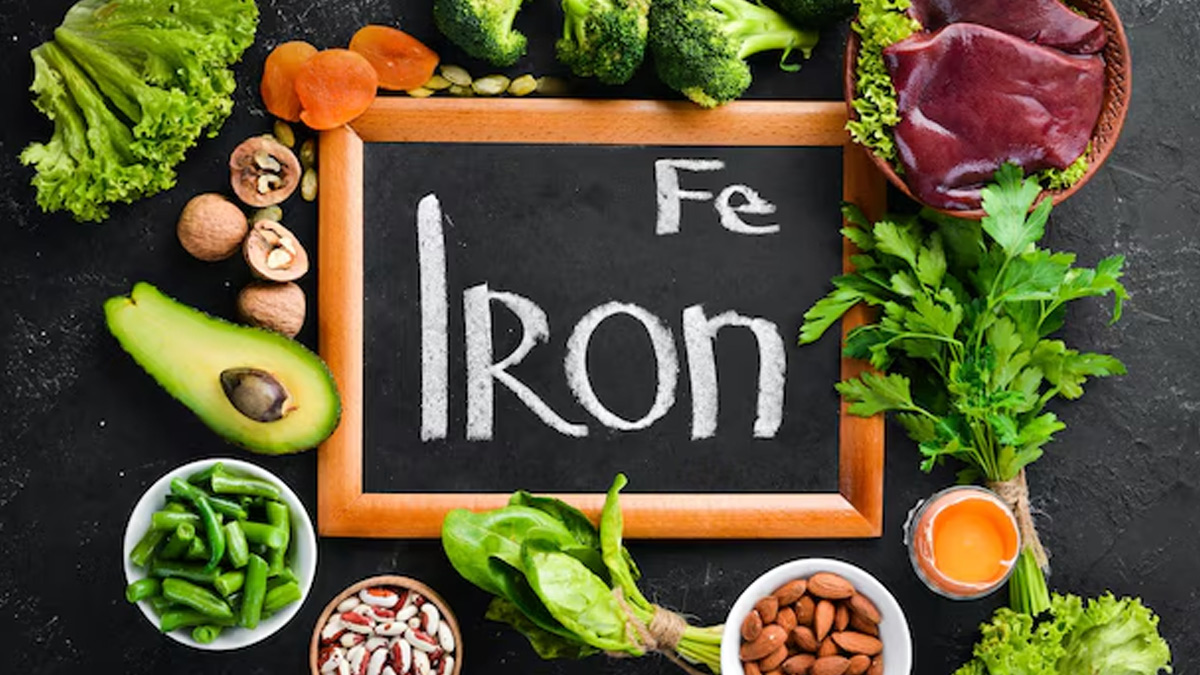
Iron deficiency is a nutritional deficiency that can cause several issues in the body. It usually occurs when people do not get enough iron from their diet. Other causes include impaired iron absorption, chronic blood loss, or increased demands of iron during pregnancy.
Table of Content:-
Iron is responsible for several functions in the body. It is a key component of haemoglobin in Red Blood Cells (RBCs), which transports oxygen throughout the body. Iron also supports the immune system, enhances muscle functions, and also helps in energy production. Therefore, when there is a lack of iron levels in the body, it can lead to several issues and cause various symptoms, one of which is cold hands and feet.
Also Read: Low On Haemoglobin? Here's How Consuming Jaggery And Peanuts Can Help
Why Does Iron Deficiency Cause Cold Hands And Feet?

In an interaction with the OnlyMyHealth team, Dr Brunda M S, Senior Consultant - Internal Medicine, Aster CMI Hospital, Bengaluru, suggests that when the body lacks sufficient iron, it struggles to produce adequate haemoglobin, the protein in RBCs responsible for transporting oxygen throughout the body. "This reduced oxygen supply can impair circulation, particularly in the extremities, leading to a sensation of coldness in the hands and feet."
He adds, "Iron plays a crucial role in maintaining overall energy levels and metabolic function; without it, the body may prioritise vital organs over peripheral areas, further contributing to feelings of coldness."
Other Common Symptoms Of Iron Deficiency

In addition to cold hands and feet, low iron levels in the body can also cause other symptoms. These include:
- Dizziness
- Headaches
- Shortness of breath, especially during physical activity
- Brittle nails
- Hair loss
- Swollen or sore tongue
- Irritability
- Difficulty concentrating
- Restless Leg Syndrome (RLS)
- Cravings for non-food items like ice or dirt (pica)
- Increased risk of frequent infections
Who Is Most At Risk Of Developing Iron Deficiency?
Iron deficiency is most common in women, according to Dr Brunda. Low levels of iron are also one of the leading causes of anaemia, which is particularly prevalent in pregnant women, those who have heavy menstrual periods, or due to increased iron demands or blood loss.
WHO estimates that 40% of children 6–59 months of age, 37% of pregnant women, and 30% of women 15–49 years of age worldwide are anaemic.
Dr Brunda adds that infants, young children, and teenagers are also at risk due to rapid growth. Additionally, vegetarians and vegans may lack sufficient iron intake from food, while individuals with digestive disorders like coeliac disease or Inflammatory Bowel Disease (IBD) may struggle with absorption.
Moreover, frequent blood donors and people with chronic illnesses, such as kidney disease or cancer, are also vulnerable.
Also Read: Is It Possible To Develop Anaemia From Blood Donation?
Can Diet Alone Treat Iron Deficiency?

“Mild to moderate iron deficiency can often be corrected through diet alone by consuming iron-rich foods like red meat, poultry, fish, lentils, beans, spinach, and fortified cereals,” says Dr Brunda, adding that pairing these with vitamin C sources, such as citrus fruits or bell peppers, enhances absorption.
However, severe iron deficiency or anaemia may require supplements, as diet alone may not replenish levels quickly enough.
Individuals with absorption issues, heavy blood loss, or chronic illnesses might need medical intervention, including intravenous iron.
While diet plays a crucial role in maintaining iron levels, a doctor’s guidance is essential for determining if supplementation is necessary, Dr Brunda shares.
Conclusion
Recognising the signs of iron deficiency, such as cold hands and feet, is important for early intervention and effective management. Ensuring an iron-rich diet, addressing underlying causes, and seeking medical advice when necessary can help maintain healthy iron levels and prevent complications like anaemia. While dietary changes can often correct mild deficiencies, severe cases may require supplementation or medical intervention. If you experience persistent symptoms, consult a healthcare professional for proper diagnosis and treatment to restore optimal iron levels.
Also watch this video
How we keep this article up to date:
We work with experts and keep a close eye on the latest in health and wellness. Whenever there is a new research or helpful information, we update our articles with accurate and useful advice.
Current Version